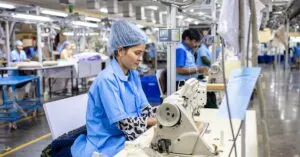Table of Contents
ToggleIn a world where everything seems to be made of plastic, metal 3D printing is like that cool kid at school who shows up with a shiny new gadget. It’s revolutionizing how industries create parts, prototypes, and even entire products. Gone are the days of traditional manufacturing constraints; now, designers can unleash their creativity without worrying about the limitations of molds or machining.
Imagine crafting intricate metal designs that were once only dreams. With metal 3D printing, it’s not just possible—it’s happening. This technology is reshaping industries from aerospace to medical, making it easier to produce lightweight, durable components. So, whether you’re a seasoned engineer or a curious innovator, metal 3D printing invites you to join the future of manufacturing, where the only limit is your imagination (and maybe your printer’s size).
Overview of Metal 3D Printing
Metal 3D printing, also known as additive manufacturing, utilizes various technologies to create metal parts layer by layer. This method begins with a digital model, which guides the printer in building precise components for different applications. Industries like aerospace and medical find tremendous value in this technology for its ability to produce lightweight yet durable structures.
Selective laser melting (SLM) and electron beam melting (EBM) stand out as two prominent techniques in this field. SLM uses a laser to fuse metal powders, while EBM employs an electron beam for the same purpose. Both methods allow for complex geometries that traditional machining techniques struggle to achieve, like internal cooling channels.
Time efficiency marks another significant advantage of metal 3D printing. Production timelines often decrease dramatically, from weeks to days. This speed meets market demand better and allows rapid prototyping, enabling engineers to iterate designs quickly.
Cost savings also emerge as a crucial benefit. Reduced material waste occurs because metal 3D printing uses only the necessary amount of material during the fabrication process. Additionally, on-demand production capabilities lower inventory costs for manufacturers.
A variety of metals, such as titanium, aluminum, and stainless steel, serve as materials for this process. Each metal offers distinct properties suited for specific applications. For example, titanium possesses excellent strength-to-weight ratios, making it ideal for aerospace components.
Safety considerations do exist; therefore, proper handling and monitoring during the printing process are vital. Operators must follow established protocols to mitigate risks associated with finely powdered metals.
Understanding these factors enhances appreciation for metal 3D printing’s role in modern manufacturing. The technology continually evolves, pushing the boundaries of what’s possible in engineering and design.
Benefits of Metal 3D Printing
Metal 3D printing offers several advantages that enhance manufacturing processes across various industries.
Design Flexibility
Design flexibility stands as one of the most significant benefits of metal 3D printing. This technology allows engineers to create complex shapes and intricate geometries that traditional methods cannot produce. Customization becomes straightforward, enabling tailored solutions for specific applications. Designers can iterate rapidly on prototypes, streamlining the testing and development phases. Enhanced design freedom leads to innovative products, capturing opportunities for optimization in performance or functionality.
Reduced Waste
Reduced waste is another critical advantage associated with metal 3D printing. Traditional manufacturing processes often involve cutting away material, generating excess scrap. In contrast, additive manufacturing starts with only the required materials, minimizing waste substantially. Figures indicate that metal 3D printing can lower material waste by up to 90%, promoting sustainability. This reduction not only conserves resources but also lowers overall production costs. Organizations can achieve more efficient use of materials, aligning with modern environmental goals.
Technologies in Metal 3D Printing
Metal 3D printing employs several advanced technologies that enhance production capabilities. Each technique offers distinctive advantages tailored to specific manufacturing needs.
Selective Laser Melting (SLM)
Selective laser melting leverages powerful lasers to fuse metal powder layer by layer. This method creates complex geometries, allowing for intricate designs that traditional manufacturing cannot match. SLM supports various metals, including titanium and aluminum, which contribute to the production of high-performance parts. Production speeds are impressive, yet precision remains paramount, which is essential in industries like aerospace and medical. Many engineers favor SLM due to its ability to produce strong, lightweight components, meeting the growing demand for innovation in these sectors.
Electron Beam Melting (EBM)
Electron beam melting utilizes high-energy electron beams instead of lasers to melt metal powder. EBM operates in a vacuum environment, which enhances melt quality and reduces oxidation. Nickel alloys and titanium are popular materials used in this technology, appealing to industries requiring high strength and heat resistance. Process efficiency is notable, often resulting in faster build times compared to other methods. Professionals often prefer EBM for its effectiveness in producing complex shapes and large parts, meeting the rigorous demands of aerospace applications.
Binder Jetting
Binder jetting employs a different approach by selectively depositing a liquid binder onto layers of metal powder. This technique allows for the production of intricately designed components with minimal material waste. Binder jetting supports various metals, including stainless steel and bronze, catering to numerous applications, such as art and industrial parts. Post-processing often involves sintering to enhance the strength of finished products. As a result, binder jetting provides manufacturers with flexibility in designing prototypes and final items, generating opportunities for small batch production and customization.
Applications of Metal 3D Printing
Metal 3D printing plays a pivotal role across various industries, providing innovative solutions that enhance production capabilities and optimize design processes.
Aerospace Industry
Aerospace benefits greatly from metal 3D printing due to its ability to produce lightweight, complex components. Components such as fuel nozzles and brackets can be fabricated with intricate geometries that traditional methods struggle to achieve. Using selective laser melting, manufacturers create parts that meet stringent safety and performance standards. The production of parts on-demand also contributes to reduced lead times, allowing for quicker testing and implementation. These efficiencies lower costs while improving overall operational effectiveness in aerospace applications.
Medical Devices
In the medical field, metal 3D printing revolutionizes device design and customization. Implants and surgical instruments are produced with precision tailored to individual patient needs. Customization options extend to dental implants, which require specific fitting for each patient. Biocompatible metals, such as titanium, offer durability and compatibility with human tissues. As medical devices demand high standards, the strength and complexity achievable through additive manufacturing ensure superior performance and patient outcomes.
Automotive Sector
The automotive sector increasingly adopts metal 3D printing for prototyping and producing intricate parts. This technology allows for rapid iteration on design, enhancing the development of components such as engine parts, brackets, and tools. By reducing material waste, automotive manufacturers achieve significant cost savings while maintaining high-quality standards. Customization becomes feasible, enabling engineers to produce lightweight components that improve fuel efficiency. The capacity to scale production and meet market demands efficiently strengthens the sector’s competitive edge.
Future Trends in Metal 3D Printing
Emerging trends in metal 3D printing showcase significant advancements shaping future developments. Automation technologies are becoming increasingly integrated, streamlining production processes and enhancing efficiency. Artificial intelligence plays a crucial role in optimizing designs, predicting failures, and improving overall effectiveness within manufacturing cycles.
Sustainability continues to gain prominence, with an emphasis on using recyclable materials and reducing energy consumption during the printing process. Collaboration between various industries fuels innovation, as aerospace and medical sectors increasingly share insights and applications, driving new opportunities for growth.
Increased adoption of hybrid manufacturing techniques is evident, combining traditional methods with additive processes. Such integration promotes flexibility, allowing for rapid production while maintaining high-quality standards. Customization capabilities expand, enabling manufacturers to produce tailored components that meet specific requirements without extensive lead times.
The development of advanced materials is a noteworthy trend, as researchers explore new alloys and metal powders that enhance properties like strength and corrosion resistance. These innovations improve the functionality of parts produced, particularly in demanding environments like aerospace.
Investments in research and development amplify the potential for breakthroughs in metal 3D printing. Financing initiatives support startups focusing on innovative solutions, pushing the boundaries of what is possible in metal additive manufacturing.
Regulatory changes may also influence the landscape, as governing bodies update standards to ensure safety and quality. This focus encourages wider acceptance across industries, fostering trust in metal 3D printing technologies.
Each of these trends collectively propels metal 3D printing into a future defined by efficiency, sustainability, and innovation.
Conclusion
Metal 3D printing is reshaping the landscape of manufacturing across multiple industries. Its ability to produce intricate and durable components is unlocking new possibilities for engineers and designers alike. As the technology continues to evolve, embracing innovations like automation and advanced materials will further enhance its capabilities.
The focus on sustainability and reduced material waste positions metal 3D printing as a key player in the future of manufacturing. By fostering creativity and encouraging experimentation, this technology empowers innovators to push boundaries and redefine what’s possible. As organizations adapt to these advancements, they’ll likely discover even more applications that drive efficiency and performance.




